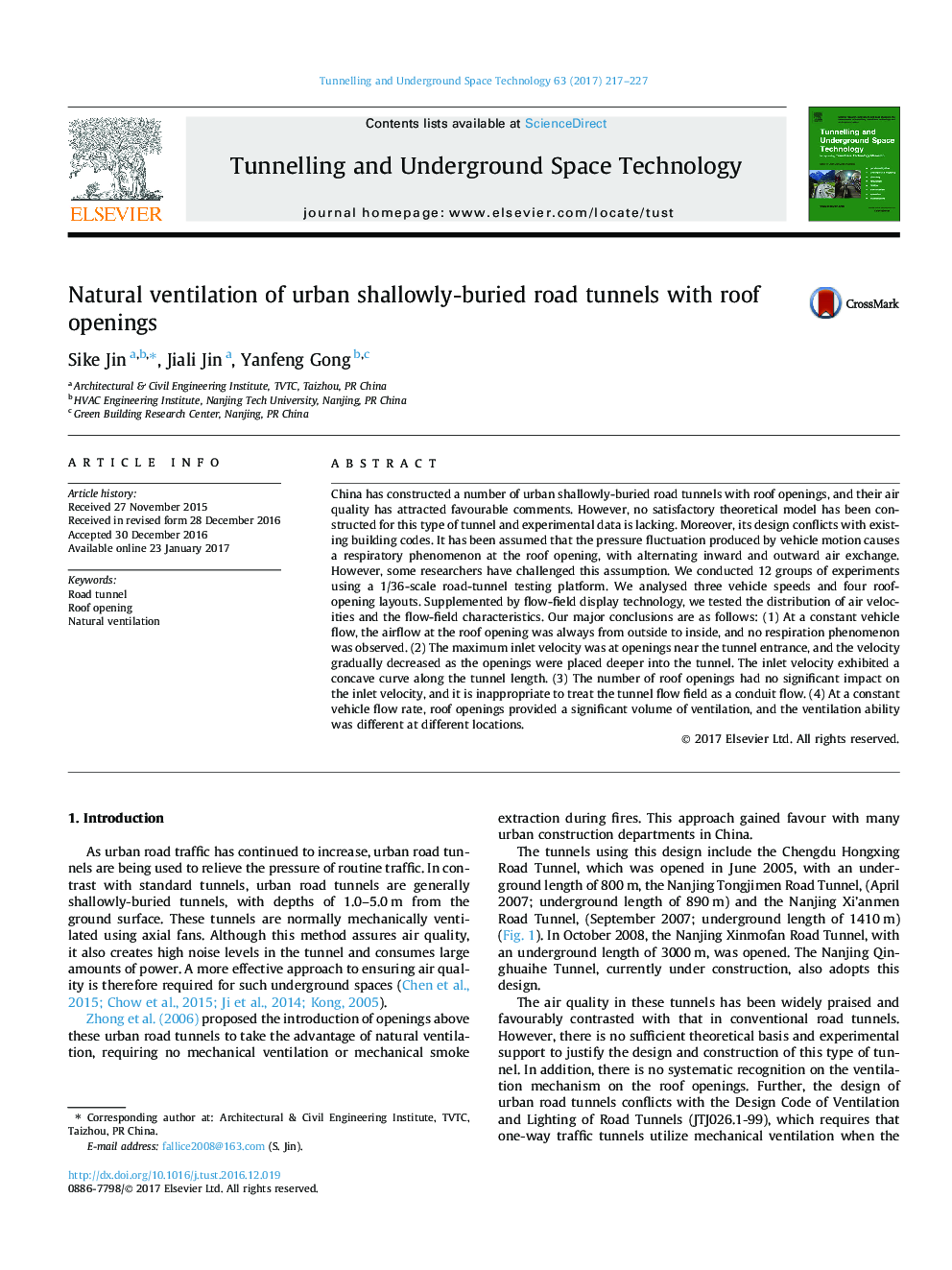| Article ID | Journal | Published Year | Pages | File Type |
|---|---|---|---|---|
| 4929386 | Tunnelling and Underground Space Technology | 2017 | 11 Pages |
Abstract
China has constructed a number of urban shallowly-buried road tunnels with roof openings, and their air quality has attracted favourable comments. However, no satisfactory theoretical model has been constructed for this type of tunnel and experimental data is lacking. Moreover, its design conflicts with existing building codes. It has been assumed that the pressure fluctuation produced by vehicle motion causes a respiratory phenomenon at the roof opening, with alternating inward and outward air exchange. However, some researchers have challenged this assumption. We conducted 12 groups of experiments using a 1/36-scale road-tunnel testing platform. We analysed three vehicle speeds and four roof-opening layouts. Supplemented by flow-field display technology, we tested the distribution of air velocities and the flow-field characteristics. Our major conclusions are as follows: (1) At a constant vehicle flow, the airflow at the roof opening was always from outside to inside, and no respiration phenomenon was observed. (2) The maximum inlet velocity was at openings near the tunnel entrance, and the velocity gradually decreased as the openings were placed deeper into the tunnel. The inlet velocity exhibited a concave curve along the tunnel length. (3) The number of roof openings had no significant impact on the inlet velocity, and it is inappropriate to treat the tunnel flow field as a conduit flow. (4) At a constant vehicle flow rate, roof openings provided a significant volume of ventilation, and the ventilation ability was different at different locations.
Keywords
Related Topics
Physical Sciences and Engineering
Earth and Planetary Sciences
Geotechnical Engineering and Engineering Geology
Authors
Sike Jin, Jiali Jin, Yanfeng Gong,
